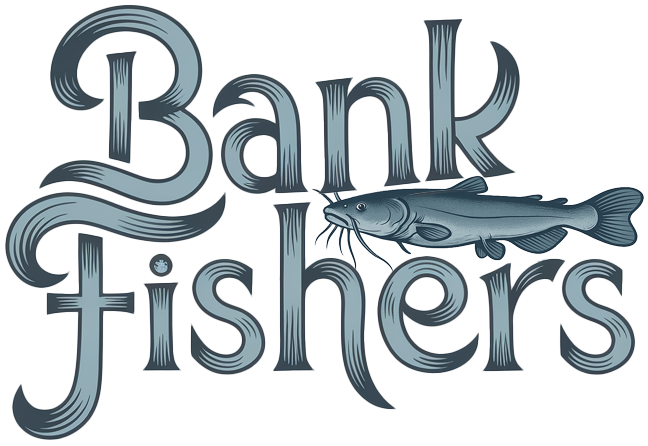
Prerequisites
- None
Materials Needed
- None
Imagine the sun rising over a tranquil lake, your line slicing through the mist-shrouded water, and the heart-pounding thrill of that first tug on your rod.
Fishing isn't just a hobby—it's a gateway to serenity, skill-building, and unforgettable moments in nature.
For beginners, this exhilarating pursuit can feel like stepping into a world of endless possibilities, whether you're casting from a rocky shoreline or chartering a boat for deep-sea excitement.
But before you hook your next prize catch, there's one essential step: understanding the fishing rules and regulations that keep the sport sustainable, legal, and enjoyable for everyone.
Why do these fishing rules matter so much?
At their heart, they're about balance—protecting fish populations and ecosystems while ensuring you avoid costly penalties. Overfishing has historically depleted stocks, like the once-abundant Atlantic cod, leading to widespread ecological and economic fallout.
By following guidelines set by authoritative bodies like the National Oceanic and Atmospheric Administration (NOAA), you contribute to conservation efforts that allow future generations to share in the joy of angling.
Legally, non-compliance can result in fines up to $100,000, gear seizures, or even jail time, but more importantly, it undermines the ethical foundation of the sport.
Responsible fishing means practicing catch-and-release, respecting size limits, and steering clear of protected species, all of which promote biodiversity and safe waterways (NOAA Fisheries, 2023).
In this beginner's guide to compliant angling, we'll demystify the essentials. First, we'll cover core federal fishing rules, including licensing, bag limits, and gear restrictions from NOAA's framework.
Then, we'll dive into state-specific variations—because while federal guidelines provide the baseline, each state adds its own twists, like seasonal closures or youth exemptions. Finally, we'll wrap up with practical tips and resources to get you started confidently.
Whether you're a total novice or brushing up your knowledge, this post is your friendly roadmap to fishing rules that blend adventure with stewardship. Grab your rod, and let's reel in some wisdom together!
Citation: NOAA Fisheries. (2023). Federal Fishing Regulations Overview. Retrieved from fisheries.noaa.gov.
Understanding Core Fishing Regulations
Navigating fishing rules can feel overwhelming for beginners, but grasping the basics is essential for ethical angling and sustainable practices.
These regulations, enforced by state and federal agencies, are designed to protect fish populations, preserve ecosystems, and ensure that future generations can enjoy the thrill of the catch.
We'll break down the core elements of fishing rules—size limits, bag limits, seasonal closures, and prohibited gear—so you can fish responsibly and confidently.
Size Limits and Bag Limits Explained
One of the first fishing rules you'll encounter is size limits, which dictate the minimum or maximum length of fish you can legally keep. These rules help juvenile fish reach reproductive age or safeguard larger breeding adults from overharvest.
For example, in Kansas, bait fish cannot exceed 12 inches in length to promote healthy population growth [1].
In the New England and Mid-Atlantic regions, halibut must measure at least 41 inches to qualify for harvest, protecting smaller, immature individuals [2].
Special rules exist too, like Nebraska's one-over-length bag limit for black bass, which restricts taking larger trophy fish to bolster breeding stocks [3].
Closely tied to size limits are bag limits, which cap the number of fish you can keep per day—either by species or overall. This prevents overfishing and allows populations to rebound.
In California ocean waters, the general bag limit is 20 finfish total, with no more than 10 of any single species, striking a balance between recreation and conservation [4].
New England halibut anglers face a strict limit of one fish per vessel per trip, emphasizing vessel-wide accountability [2].
Meanwhile, Kansas permits up to 500 bait fish per person daily, accommodating bait collectors while maintaining ecosystem health [1].
Always check local fishing rules for specifics, as these can vary by water body and change based on scientific assessments.
Seasonal Closures and Open Seasons
Timing is everything in fishing, and seasonal closures are a key part of fishing rules that protect fish during vulnerable periods like spawning.
These closures temporarily halt harvesting to allow populations to reproduce without disturbance. NOAA Fisheries outlines open and closed seasons by species; for instance, many like hake and monkfish are open year-round in certain regions, providing consistent angling opportunities [2].
However, species with sensitive spawning cycles might face restrictions—think summer closures for red drum in the Gulf to safeguard breeding grounds.
Open seasons, on the flip side, signal when it's prime time to cast your line. Understanding these windows helps you plan trips around peak activity while respecting fishing rules.
Regulations are informed by ongoing research into spawning patterns and population health, ensuring that short-term closures lead to long-term abundance.
Pro tip for beginners: Download apps or check agency websites before heading out, as seasons can shift annually based on fishery data.
Prohibited Gear and Fishing Methods
Not all tools are fair game when it comes to fishing rules—prohibited gear regulations target methods that could harm habitats or lead to unintended catches.
These bans promote selective, low-impact fishing to sustain ecosystems. In Kansas, for example, seining (using nets to drag the water) is off-limits on department-owned waters to avoid damaging aquatic vegetation and non-target species [1].
Trap and net sizes are also strictly regulated there to prevent bycatch.
Nebraska takes a similar stance, prohibiting limb or set lines in ponds and lakes, and banning the seining of sport fish entirely to protect recreational favorites like trout and bass [3].
In California, gear restrictions go further, limiting certain hooks or lines to reduce harm to overfished species while allowing traditional rod-and-reel methods [4].
Federally, agencies like NOAA enforce rules against destructive practices, such as explosives or poisons, worldwide [2]. By sticking to approved gear, you're not just following the law—you're contributing to cleaner waters and healthier fish stocks. Remember, violations can result in fines, so gear up wisely and report suspicious activity to authorities.
Mastering these core fishing rules sets you up for successful, sustainable outings. Stay informed through official sources, and happy fishing!
[1] https://ksoutdoors.gov/Fishing/Fishing-Regulations
[2] https://www.fisheries.noaa.gov/new-england-mid-atlantic/recreational-fishing/recreational-fishing-regulations-species
[3] https://outdoornebraska.gov/fish/
[4] https://wildlife.ca.gov/Fishing/Ocean/Regulations/Fish
Navigating State-Specific Fishing Rules
Fishing is an incredible way to connect with nature, but as a beginner, one of the biggest hurdles is understanding the complex web of fishing rules that vary by state.
These regulations ensure sustainable fish populations, protect ecosystems, and keep everyone safe on the water. Whether you're casting in a serene river or venturing offshore, knowing your local fishing rules is essential to avoid fines and make the most of your trip.
We'll break down state-specific examples, how to access the info you need, and where federal rules come into play—especially for those interstate adventures.
Popular State Examples: California, Texas, and Oregon
Diving into fishing rules state by state can feel overwhelming, but starting with popular destinations like California, Texas, and Oregon highlights key differences. Each state tailors its regulations to local ecosystems, species, and conservation needs, with annual updates to reflect changing conditions.
California
California's fishing rules are a mix of freshwater and saltwater guidelines, updated yearly by the California Department of Fish and Wildlife (CDFW) to promote sustainability. For 2025, a big change is the elimination of minimum size limits for certain groundfish species—like cabezon, California scorpionfish, kelp greenling, and rock greenling—bringing state rules in line with federal ones starting January 1 [1].
In the Klamath River Basin, low Chinook salmon returns have led to a closure of in-river recreational salmon fishing for 2025, though steelhead and brown trout seasons remain open. If you're filleting fish at sea, remember that lingcod fillets need full skin intact and must be at least 14 inches long, while those other groundfish fillets require skin but no size minimums anymore. These tweaks make it easier for beginners to comply while fishing responsibly in California's diverse waters.
Texas
Texas offers prime Gulf Coast and inland fishing, but its rules clearly separate state and federal waters—state jurisdiction ends at 9 nautical miles offshore, after which federal fishing rules kick in [2].
You'll need a Texas freshwater or saltwater fishing license, plus a saltwater endorsement, to possess fish caught in federal waters if you're landing them in Texas. For reef fish, federal requirements include using non-stainless circle hooks and carrying descending devices to help fish with barotrauma (pressure-related injuries) survive when released.
Red snapper is a hot topic: Texas manages seasons in adjacent federal Gulf waters, with a strict 4-fish possession limit for recreational anglers. Importantly, if something's illegal in federal waters, you can't possess it in Texas state waters either—enforcement is tight to protect shared resources.
Oregon
Oregon's fishing rules split neatly between freshwater (rivers and lakes) and ocean regulations, managed by the Oregon Department of Fish and Wildlife (ODFW).
Federal rules apply beyond 3 nautical miles offshore, but in state waters, expect seasonal and size limits for prized species like salmon and steelhead, which get annual updates based on fish runs.
For instance, in-river salmon fishing often has bag limits and closures to allow populations to rebound. Oregon's rules emphasize catch-and-release in sensitive areas, making it beginner-friendly for those learning sustainable practices in its stunning Pacific Northwest landscapes.
These examples show how fishing rules adapt to each state's unique environment, but always double-check for the latest updates before heading out.
How to Access Local Regulations and Apps
Staying on top of fishing rules doesn't have to be a hassle—thanks to user-friendly apps, websites, and downloadable resources, beginners can get real-time info at their fingertips. Here's how to navigate them for our featured states and beyond.
For California, the CDFW's online portal is your go-to: download free 2025-26 PDF booklets packed with season dates, size limits, closures, and interactive freshwater maps [1]. Their mobile-friendly site lets you search by location or species, perfect for planning a coastal trip.
In Texas, the Texas Parks & Wildlife Department (TPWD) website covers both state and federal fishing rules, including license requirements and red snapper season alerts [2]. Look for their fishing app, which provides quick checks on bag limits and gear rules, ensuring you're compliant even in multi-jurisdictional spots.
Oregon shines with ODFW's dedicated apps and interactive maps, where you can input your location to see current regulations, catch limits, and emergency closures for salmon or steelhead. It's especially handy for river anglers tracking seasonal changes.
Don't forget federal tools: The NOAA Fisheries website breaks down regional management plans, permits, and rules for offshore fishing, helping you layer state and federal info seamlessly [4]. Pro tip: Set up email alerts from these sites to get notified of updates—saving you time and potential headaches on the water.
Federal Overlaps for Interstate Waters
When your fishing adventure crosses state lines or heads into deeper waters, federal fishing rules often overlap with state ones, creating a layered system of regulations. This is crucial for interstate waters like shared rivers, lakes, or offshore zones, where conservation takes priority.
Federal jurisdiction kicks in from 3 to 200 nautical miles offshore, managed by regional councils under NOAA Fisheries. These rules can supersede state fishing rules for species like groundfish or reef fish, enforcing catch limits, gear restrictions (e.g., circle hooks in the Gulf), and reporting requirements [3].
For example, while California aligns its groundfish rules with federal ones [1], Texas anglers in federal waters must follow separate possession rules for red snapper [2].
Some states extend their rules into federal areas for residents landing catch locally—but only for non-federally managed species.
In interstate scenarios, like the Klamath River (spanning California and Oregon), check both states' rules plus any tribal or federal overlays for salmon.
Always prioritize federal compliance offshore to avoid violations that could affect your entire catch. By understanding these overlaps, beginners can fish confidently across borders, respecting the bigger picture of marine conservation.
Mastering state-specific fishing rules is your ticket to ethical, enjoyable angling. Bookmark those resources, grab your license, and hit the water—happy fishing!
[1] https://cdfwmarine.wordpress.com/2025/03/20/recreational-fishing-regulation-changes-and-reminders-for-2025-groundfish-season/
[2] https://tpwd.texas.gov/regulations/outdoor-annual/fishing/saltwater-fishing/fishing-in-federal-waters
[3] NOAA Fisheries website for federal regulations
Conclusion
As we've explored throughout this beginner's guide to fishing rules, adhering to regulations isn't just about staying on the right side of the law—it's about preserving our waterways for future generations, ensuring sustainable fish populations, and maximizing your time on the water with confidence and enjoyment. Whether you're casting your first line in a local pond or venturing out to sea, understanding these rules transforms fishing from a simple hobby into a responsible adventure.
Key Takeaways for Responsible and Enjoyable Fishing
To wrap up, let's recap the essentials. At the federal level, core fishing rules enforced by the National Oceanic and Atmospheric Administration (NOAA) emphasize obtaining a fishing license, respecting bag and size limits, and avoiding protected species to prevent overfishing and habitat disruption (NOAA Fisheries, 2023). For instance, the Magnuson-Stevens Act sets national standards for sustainable fisheries, reminding us that every catch counts toward conservation efforts.
On the state level, fishing rules vary significantly—think seasonal closures in California to protect spawning salmon (California Department of Fish and Wildlife, 2023) or specific gear restrictions in Florida's coastal waters (Florida Fish and Wildlife Conservation Commission, 2023). These guidelines not only safeguard local ecosystems but also promote safety, like mandatory life jacket rules for boating.
The golden rule? Always verify the latest fishing rules through official sources. Check your state's fish and wildlife agency website or apps like Fishbrain for real-time updates, as regulations can change based on environmental factors. By doing so, you'll avoid hefty fines and contribute to thriving fisheries.
In the end, responsible fishing isn't a chore—it's the key to unforgettable outings filled with trophy catches and serene sunsets. So grab your rod, respect the rules, and reel in those memories. Happy fishing!
References:
– NOAA Fisheries. (2023). Federal Fishing Regulations. Retrieved from noaa.gov/fisheries.
– California Department of Fish and Wildlife. (2023). Sport Fishing Regulations. Retrieved from wildlife.ca.gov.
– Florida Fish and Wildlife Conservation Commission. (2023). Fishing Regulations. Retrieved from myfwc.com.


